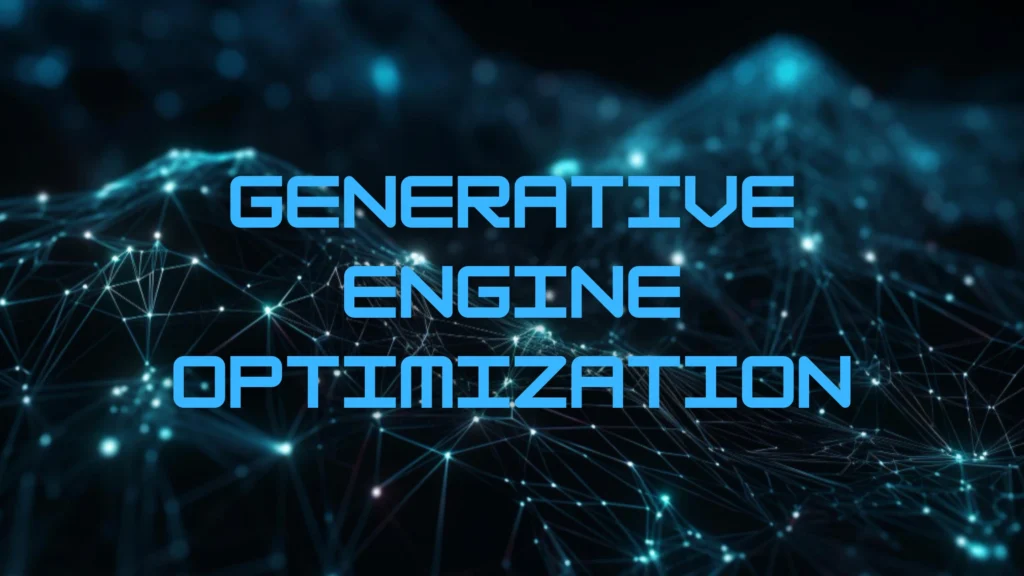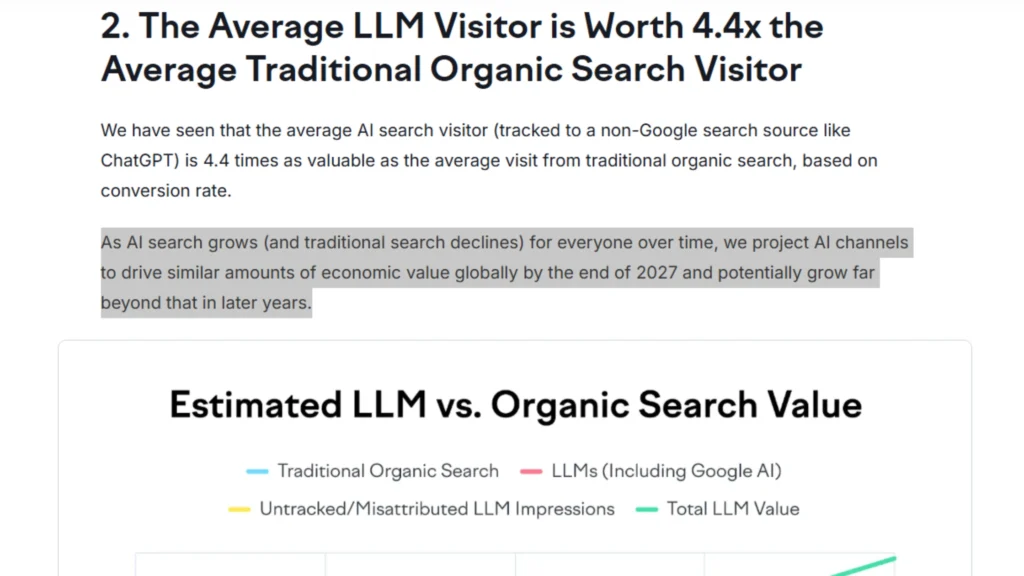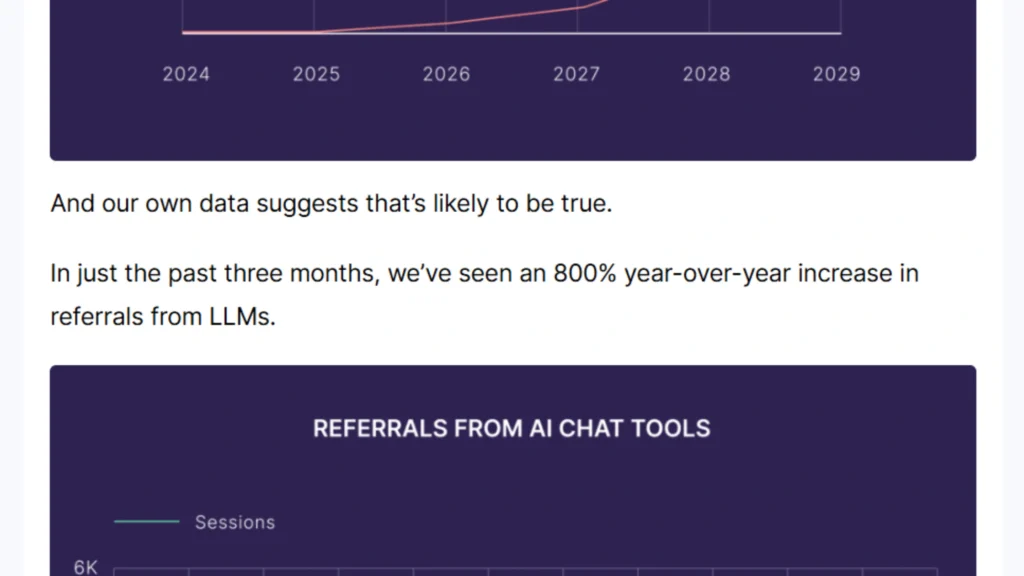The days of SEO being solely about ranking on Google’s search results are over. To grow your organic presence in 2025, you need to understand how AI tools like Gemini, ChatGPT, and Perplexity work. These generative AI models aren’t just answering questions; they’re influencing the decisions your potential customers make, often bypassing traditional search entirely. If your content isn’t appearing in AI-generated answers, you’re missing out on visibility and revenue.

We’re no longer in the era of “10 blue links.” Every time someone prompts a large language model (LLM), it pulls content from across the web to craft a custom answer tailored to the user. This shift has given rise to Generative Engine Optimization (GEO)—a strategy to ensure your brand is cited in AI responses across platforms. In this guide, we’ll explore what GEO is, why it matters, and a six-step playbook to help your brand thrive in this decentralized search landscape.
The Shift to Search Everywhere
For years, search meant Google, one algorithm, one ranking system. That world is gone. Search isn’t dying; it’s decentralizing. People still use Google, but they’re also turning to YouTube tutorials, Reddit threads, TikTok comments, LinkedIn posts, and, increasingly, generative AI tools that aggregate data from all these sources.
Each platform has its own logic, recommendation engine, and criteria for surfacing content. Visibility today means showing up wherever your audience is looking for answers.

The data support this shift. SEMrush predicts that by the end of 2027, LLM-driven traffic will surpass traditional search. At Backlinko, AI tool referrals have surged 800% year-over-year as users consume information across diverse platforms, formats, and engines.

What Is Generative Engine Optimization (GEO)?
GEO is the practice of optimizing your brand and content to be cited in AI-generated answers across tools like ChatGPT, Perplexity, and Google’s AI Mode. Unlike traditional SEO, which focuses on rankings and website traffic, GEO aims to make your brand a trusted source within the AI’s response itself.
This doesn’t mean abandoning SEO; GEO builds on its foundations, emphasizing content quality, technical fundamentals, and authority while introducing new tactics tailored to how LLMs function.
The key difference? In SEO, success means driving traffic to your site. In GEO, success means getting cited. Mentions, not just backlinks, signal trust to AI models. Your content must solve problems clearly and concisely across multiple platforms, not just your website.
The Six-Step GEO Playbook
Here’s a practical, actionable plan to adapt your strategy for the generative AI era.
Step 1: Nail the Fundamentals
GEO starts with solid SEO. If your site isn’t crawlable, fast, or mobile-friendly, you’ll be invisible to both Google and AI models. Before diving into advanced tactics, ensure your foundation is strong:
-
Structure your content: Use clear headings, page titles, and a robust internal link structure to organize your site.
-
Prioritize technical performance: Ensure every page is indexable, optimize for speed, and deliver a seamless mobile experience.
Visibility also hinges on credibility. Leverage Google’s EEAT framework (Experience, Expertise, Authoritativeness, Trustworthiness) to stand out. Follow this technical SEO checklist to make sure you are not missing anything.
-
Demonstrate expertise: Share firsthand knowledge, real results, and original insights.
-
Show depth: Go beyond summaries with detailed, actionable content.
-
Build trust: Use authentic author bios, link to reputable sources, and highlight testimonials.
AI models won’t cite you if they don’t trust you. A strong foundation ensures you’re in the game.
Step 2: Leverage Mentions and Co-Citations
AI tools don’t just follow links—they learn from mentions. Where is your brand being discussed? In what context? If you’re absent from Reddit threads, YouTube videos, forum posts, or industry roundups, you’re ceding visibility to competitors.
Co-citations—when your brand appears alongside trusted names, even without links—are critical. Here’s how to build this signal:
-
Monitor your brand: Search for your brand name across platforms where your customers engage. Track mentions and sentiment.
-
Add value: Contribute to conversations in forums, social media, and comment sections.
-
Earn inclusions: Get featured in comparison posts, resource lists, and roundup content.
Backlinks still matter, but mentions, context, and associations are what tell LLMs your brand deserves to be part of the answer.
Step 3: Go Multi-Platform
Generative engines pull from more than just blog posts. They scan YouTube transcripts, Reddit and Quora threads, podcast summaries, LinkedIn posts, TikTok captions, and beyond. If your brand only lives on your website, you’re invisible to much of the modern web.
A multi-platform strategy achieves two goals:
-
Meets your audience where they are: Show up on the platforms your customers already use.
-
Increases AI visibility: The more places your content appears, the more likely AI models are to recognize and cite you.
Expand your presence across diverse channels to maximize your brand’s surface area.
Step 4: Analyze What AI Is Citing
You don’t need to guess what AI values. Open ChatGPT, Claude, or Gemini and prompt them like a customer would. Ask questions your audience might pose, such as:
-
“What’s the best product for [situation]?”
-
“Which brands are trusted for [topic]?”
-
“How does [category A] compare to [category B]?”
Study the results. Which brands are cited? Which platforms are sourced? What’s the tone or sentiment? This exercise reveals what LLMs prioritize and highlights gaps you can fill with targeted content. Tools like SEMrush’s AI toolkit can scale this analysis, but manual testing provides immediate insights.
Step 5: Answer Real Questions
People interact with AI differently than they do with Google. Instead of typing “meal prep ideas,” they’re asking, “What should I cook this week if I’m trying to lose weight but only have 30 minutes a night?” If your content doesn’t match these conversational, long-tail queries, you won’t get cited.
To align with real user questions:
-
Mine customer data: Review support tickets, sales call transcripts, and reviews.
-
Explore niche platforms: Check Reddit, Discord, Slack groups, and forums for authentic questions.
-
Create human-centric content: Answer in your customers’ own words, focusing on clarity and value.
Long-tail conversational prompts are often underserved, giving you an edge over brands still chasing generic keywords.
Step 6: Track Your LLM Visibility
You can’t improve what you don’t measure. Start by listing prompts your audience is likely asking, derived from your existing SEO keywords. Daily, test two to three LLMs (in logged-out mode to avoid personalization) to see how they respond. Note which brands and platforms are cited.
For deeper insights, use tools like SEMrush’s AI toolkit to track your domain’s visibility in AI answers or monitor ChatGPT search responses. For larger businesses, enterprise AIO platforms offer robust tracking of brand mentions and citations at scale.
The Future of Organic Visibility
GEO isn’t about starting from scratch—it’s about evolving your SEO strategy to match how people search today. If you’ve already invested in high-quality content and built real brand authority, you’re on the right track. But now it’s time to take the next step: optimize for how AI tools find, interpret, and cite your content.
That’s where we come in.
At GlobeSign, we specialize in Generative Engine Optimization services designed to help your brand stand out in AI-generated answers across platforms like ChatGPT, Perplexity, Gemini, and more.
Stay ahead of the curve. Get cited where it matters. And make sure your audience finds you—no matter how they search.
Ready to future-proof your visibility? Explore our GEO services now.





